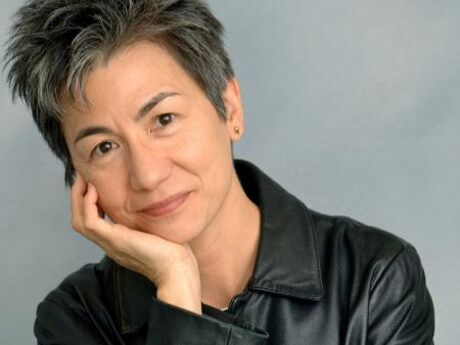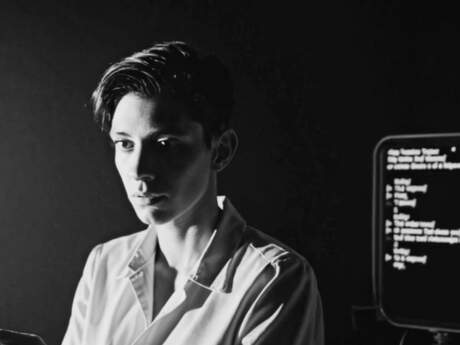On Poetry
Senryū: The Haiku’s Comic Cousin

Last April, I found myself in a Miami mall speaking to Floridians curious to learn about and to write senryū. The O Miami Poetry Festival staff had set up chairs and tables in the multi-level outdoor mall, making it the perfect spot for me to introduce this popular Japanese form.
By way of introduction: how is senryū pronounced and what is it? Senryū is pronounced, sen-ryoo and, in Japanese, the symbol over the “u” indicates that the vowel is elongated. (Not to get too academic, but in English prosody, the macron symbol is often dropped.) I think of it as haiku’s comic cousin, although translator Hiroaki Sato notes that the customary description would be “satirical.”
Haiku’s cousin? What are the similarities and differences? Written in Japanese, both are seventeen syllables and unrhymed. This is because they both originate from the same earlier form, the renga, or “linked verse.” Again, without getting too technical, the latter is a collaborative form that opens with a hokku, or “starting verse,” that marks the time and place. As eras passed, poets such as Bashō rejected the strict rules of court poetics, but they retained some of the basics, in particular, the 5-7-5 syllable pattern. The haiku also retained two other elements: the use of what I’ll call a pivotal word (or what writer Faubion Bowers called a “thought pause”) and the inclusion of a seasonal reference. The senryu did not require either. Aside from the seventeen syllables the main characteristic, in the words of the scholar Makoto Ueda, is that the senryu poet “keenly studies various aspects of the human condition and reports his findings in a humorous way.”
In short, the subject of the haiku is nature; the senryu, human nature. The haiku customarily pivots with a sudden awareness; the senryu is more of a snapshot. Here are side-by-side examples:
At Futami Bay a traveler
rips out the clam’s flesh and I
set out into the fall.
—A haiku by Bashō
I grab the robber
and find I’ve caught
my own son.
As a man fond of both
loose women and senryu—
please remember me.
—Two senryu by Karai Senyru (the form’s namesake)
In his online essay, “A Brief Survey of Senryū by Women,” Sato includes these twentieth-century gems (all are his translations and, as is his custom and others, rendered in a single line):
Out of a wildly hairy shawl a human head
—Kyoko Shimoyama
The moment it blooms with full force it’s cut
—Nobuko Inoue
In a sudden shower a woman covers her obi first
—Sobaijo Sakai
[obi: sash worn with kimono and, in this case, valuable to the woman]
I keep hugging my self that’s different from my age
I’ll trust this man for now I take off my tabi
—Kanojo Usui, two senryu
[tabi are the equivalent of socks]
One reason I wanted to introduce the senryu is because I feel that many Westerners who write haiku are actually writing senryu! Some Japanese practitioners suggest that labels are not as important as the outcome. In any case, I think it is fascinating to see variation of tone and progression in such short forms. And, in that Miami mall, the participants delighted in wandering around, observing shoppers and other pedestrians in their native habitat!
A mockingbird
pecking at popcorn mocks
the old guy texting.
Resources:
Blyth, R.L. Japanese Life and Character in Senryu. (Tokyo: Hokuseido Press,1960).
Bowers, Faubion. The Classic Tradition of Haiku. (Mineola, NY: Dover, 1996).
Sato, Hiroaki. On Haiku. (San Francisco: New Directions Press, 2018).
Sato, Hiroaki. “A Brief Survey of Senryū by Women.” (Modern Haiku online journal, 34. 1).
Ueda, Makoto. Light Verse from the Floating World: an anthology of premodern Japanese senryu (New York: Columbia University Press, 1999).
Wright, Richard. Haiku: the last poetry of Richard Wright.
(NY: Arcade Publishing, 2012).

